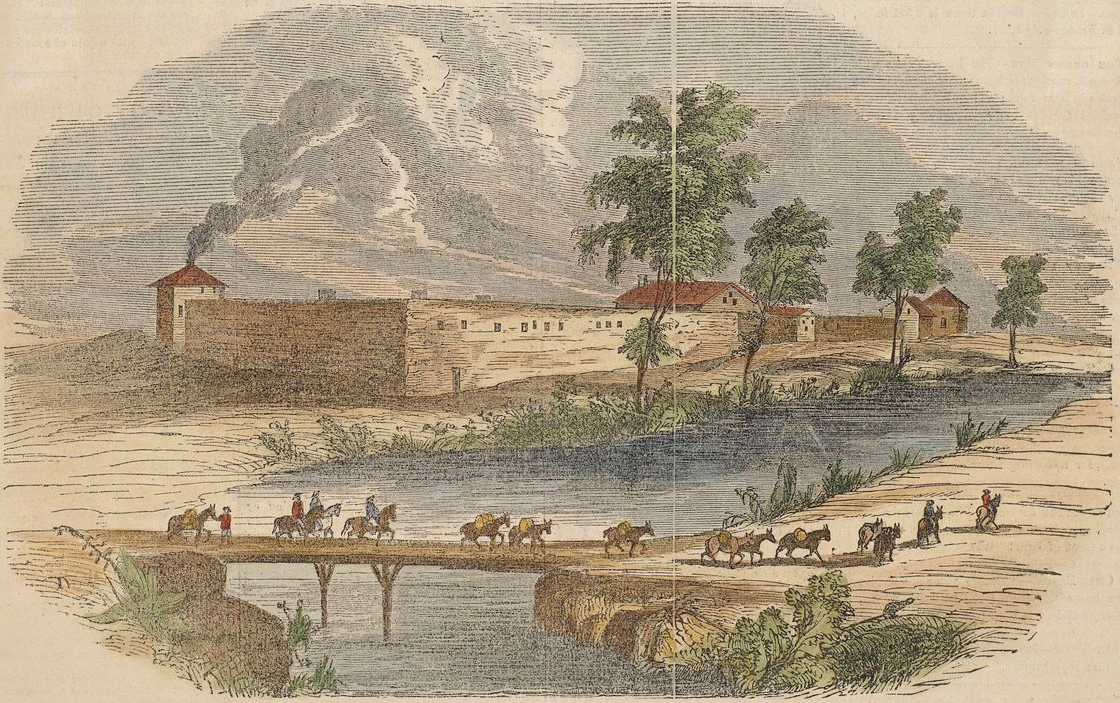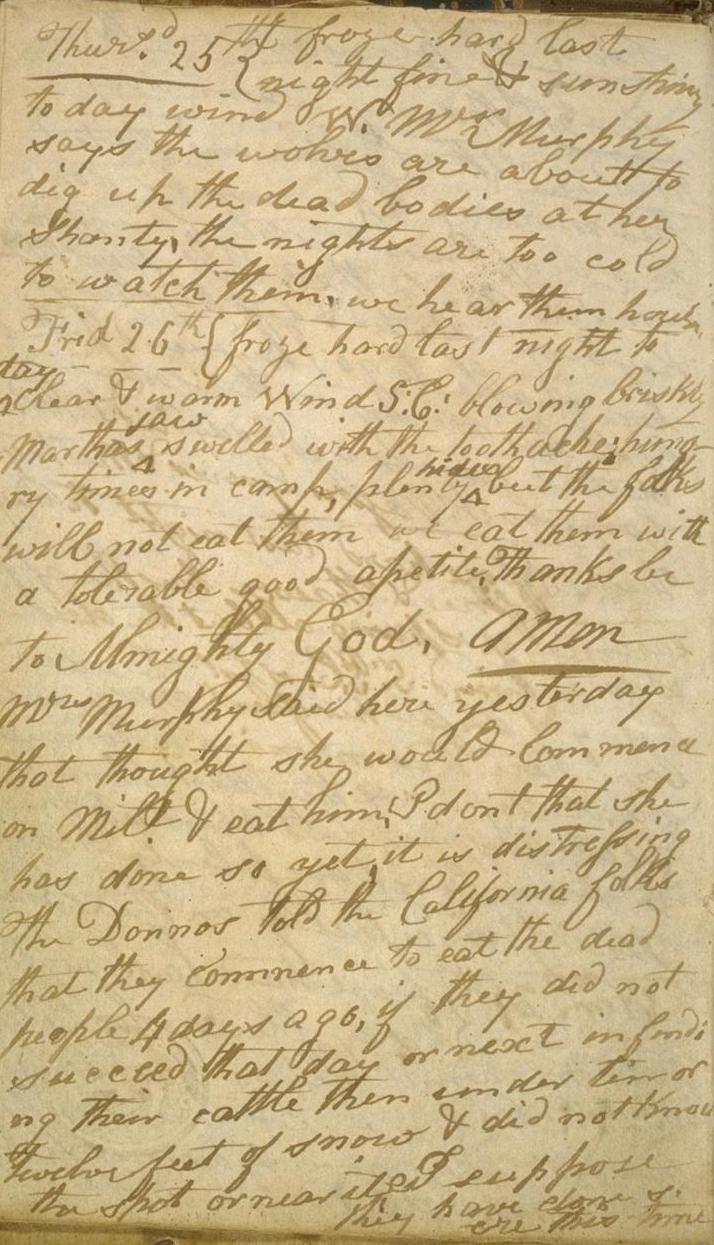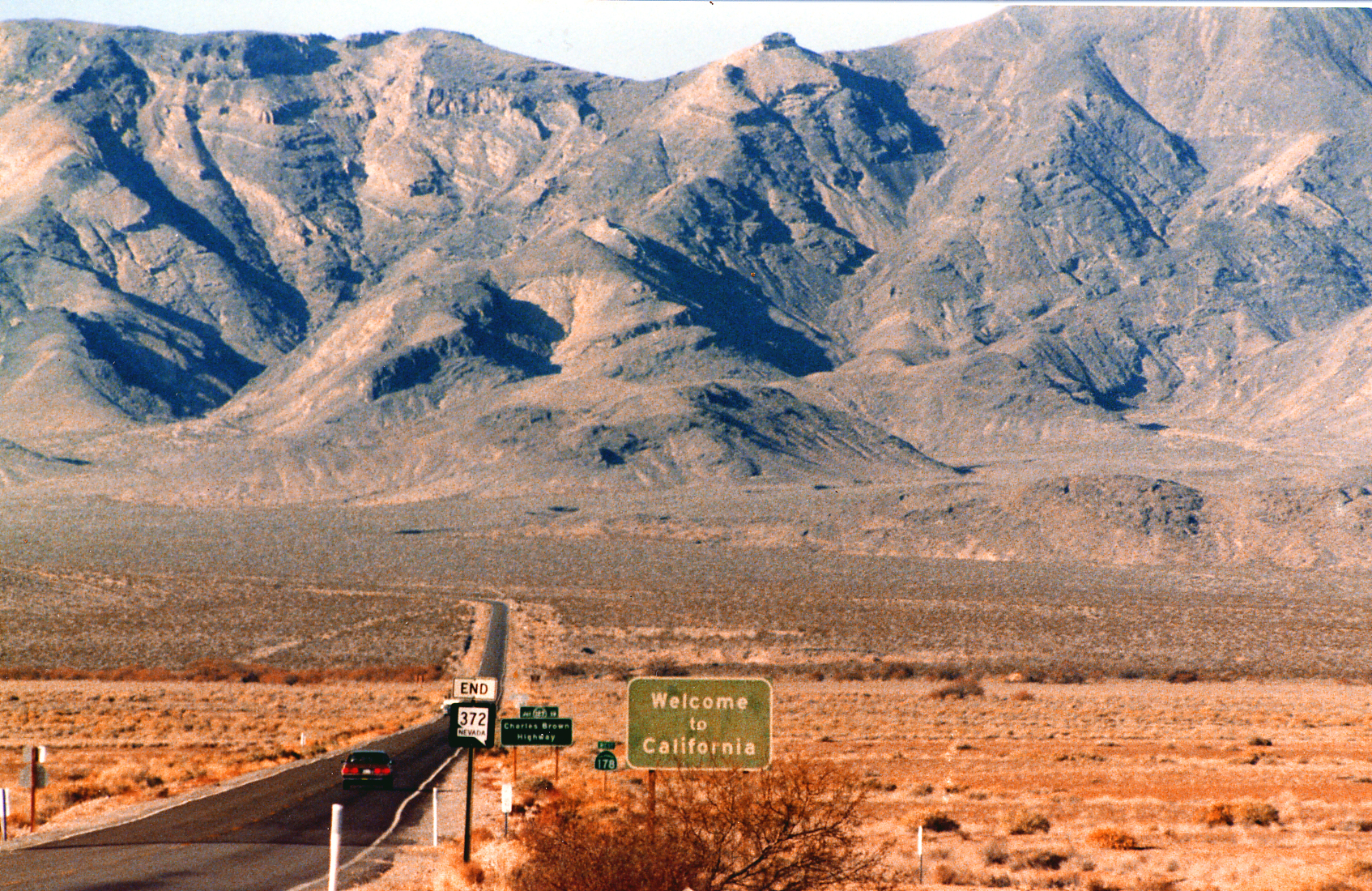|
Edward Kern
Edward Meyer Kern (October 26, 1822 or 1823 – November 25, 1863) was an American artist, topographer, and explorer of California, the Southwestern United States, and East Asia. He is the namesake of the Kern River and Kern County, California. Early life Kern was born in Philadelphia, the son of John Kern III and Mary Elizabeth Bignell. He was trained as an artist. His brother Richard Kern (1821–1853) was also an accomplished artist, and his brother Benjamin Kern (1818–1849) was a doctor. They joined him on several expeditions. Expeditions California In 1845–46, Kern accompanied explorer Captain John C. Frémont on his Third Expedition into Mexican Alta California. Kern received a daily salary of $3.00. He served as a cartographer as well as a documentation artist, collecting botanical and animal specimens on the journey. Each night of the trip Kern drew a field map of the day's route with longitudes and latitudes, and sketched landmarks. En route in Nevada, Kern ... [...More Info...] [...Related Items...] OR: [Wikipedia] [Google] [Baidu] |
Philadelphia, Pennsylvania
Philadelphia, often called Philly, is the largest city in the Commonwealth of Pennsylvania, the sixth-largest city in the U.S., the second-largest city in both the Northeast megalopolis and Mid-Atlantic regions after New York City. Since 1854, the city has been coextensive with Philadelphia County, the most populous county in Pennsylvania and the urban core of the Delaware Valley, the nation's seventh-largest and one of world's largest metropolitan regions, with 6.245 million residents . The city's population at the 2020 census was 1,603,797, and over 56 million people live within of Philadelphia. Philadelphia was founded in 1682 by William Penn, an English Quaker. The city served as capital of the Pennsylvania Colony during the British colonial era and went on to play a historic and vital role as the central meeting place for the nation's founding fathers whose plans and actions in Philadelphia ultimately inspired the American Revolution and the nation's inde ... [...More Info...] [...Related Items...] OR: [Wikipedia] [Google] [Baidu] |
Klamath People
The Klamath people are a Native American tribe of the Plateau culture area in Southern Oregon and Northern California. Today Klamath people are enrolled in the federally recognized tribes: * Klamath Tribes (Klamath, Modoc, and Yahooskin (Yahuskin) Band of Northern Paiute Indians), Oregon * Quartz Valley Indian Community (Klamath, Karuk (Karok), and Shasta (Chasta) people), California. History Pre-contact The Klamath people lived in the area around the Upper Klamath Lake (E-ukshi - “Lake”) and the Klamath, Williamson (Kóke - “River”), Wood River (E-ukalksini Kóke), and Sprague (Plaikni Kóke - “River Uphill”) rivers. They subsisted primarily on fish and gathered roots and seeds. While there was knowledge of their immediate neighbors, apparently the Klamath were unaware of the existence of the Pacific Ocean. Gatschet has described this position as leaving the Klamath living in a "protracted isolation" from outside cultures. North of their tribal territory lived ... [...More Info...] [...Related Items...] OR: [Wikipedia] [Google] [Baidu] |
Donner Party
The Donner Party, sometimes called the Donner–Reed Party, was a group of American pioneers who migrated to California in a wagon train from the Midwest. Delayed by a multitude of mishaps, they spent the winter of 1846–1847 snowbound in the Sierra Nevada mountain range. Some of the migrants resorted to cannibalism to survive, eating the bodies of those who had succumbed to starvation, sickness, and extreme cold. The Donner Party originated from Springfield, Illinois, and departed Independence, Missouri, on the Oregon Trail in the spring of 1846, behind many other pioneer families who were attempting to make the same overland trip. The journey west usually took between four and six months, but the Donner Party was slowed after electing to follow a new route called the Hastings Cutoff, which bypassed established trails and instead crossed the Rocky Mountains' Wasatch Range and the Great Salt Lake Desert in present-day Utah. The desolate and rugged terrain, and the difficultie ... [...More Info...] [...Related Items...] OR: [Wikipedia] [Google] [Baidu] |
John Sutter
John Augustus Sutter (February 23, 1803 – June 18, 1880), born Johann August Sutter and known in Spanish as Don Juan Sutter, was a Swiss immigrant of Mexican and American citizenship, known for establishing Sutter's Fort in the area that would eventually become Sacramento, California, the state's capital. Although he became famous following the discovery of gold by his employee James W. Marshall and the mill-making team at Sutter's Mill, Sutter saw his own business ventures fail during the California Gold Rush. Those of his elder son, John Augustus Sutter Jr., were more successful.Sutter, John A. Jr. & Ottley, Allan R. (Ed.). ''Statement: Regarding Early California Experiences''. Sacramento Book Collectors Club. 1943. Early life Johann August Sutter was born on February 23, 1803, in Kandern, Baden (present-day Germany), to Johann Jakob Sutter, a foreman at a paper mill, and Christina Wilhelmine Sutter (née Stober). His father came from the nearby town of Rünenberg ... [...More Info...] [...Related Items...] OR: [Wikipedia] [Google] [Baidu] |
Sacramento Valley
, photo =Sacramento Riverfront.jpg , photo_caption= Sacramento , map_image=Map california central valley.jpg , map_caption= The Central Valley of California , location = California, United States , coordinates = , boundaries = Sierra Nevada (east), Cascade Range, Klamath Mountains (north), Coast Range (west), Sacramento–San Joaquin River Delta (south) , towns = Redding, Chico, Yuba City, Sacramento , watercourses = Sacramento River The Sacramento Valley is the area of the Central Valley of the U.S. state of California that lies north of the Sacramento–San Joaquin River Delta and is drained by the Sacramento River. It encompasses all or parts of ten Northern California counties. Although many areas of the Sacramento Valley are rural, it contains several urban areas, including the state capital, Sacramento. Since 2010, statewide droughts in California have further strained both the Sacramento Valley's and the Sacramento metropolitan region's water security. Geog ... [...More Info...] [...Related Items...] OR: [Wikipedia] [Google] [Baidu] |
Sutter's Fort
Sutter's Fort was a 19th-century agricultural and trade colony in the Mexican ''Alta California'' province.National Park Service"California National Historic Trail."/ref> The site of the fort was established in 1839 and originally called New Helvetia (''New Switzerland'') by its builder John Sutter, though construction of the fort proper would not begin until 1841. The fort was the first non-indigenous community in the California Central Valley. The fort is famous for its association with the Donner Party, the California Gold Rush, and the formation of the city of Sacramento, surrounding the fort. It is notable for its proximity to the end of the California Trail and Siskiyou Trails, which it served as a waystation. After gold was discovered at Sutter's Mill (also owned by John Sutter) in Coloma on January 24, 1848, the fort was abandoned. The adobe structure has been restored to its original condition and is now administered by California Department of Parks and Recreation. It ... [...More Info...] [...Related Items...] OR: [Wikipedia] [Google] [Baidu] |
Bear Flag Revolt
The California Republic ( es, La República de California), or Bear Flag Republic, was an unrecognized breakaway state from Mexico, that for 25 days in 1846 militarily controlled an area north of San Francisco, in and around what is now Sonoma County in California. In June 1846, thirty-three American immigrants in Alta California who had entered without official permissionBancroft; IV: 598–608 rebelled against the Mexican department's"Department" was a territorial and administrative designation used by Mexico's centralized government under the Seven Laws of 1836. government. Among their grievances were that they had not been allowed to buy or rent land and had been threatened with expulsion.Richman p 308 Mexican officials had been concerned about a coming war with the United States and the growing influx of Americans into California. The rebellion was covertly encouraged by U.S. Army Brevet Captain John C. Frémont, and added to the troubles of the recent outbreak of the ... [...More Info...] [...Related Items...] OR: [Wikipedia] [Google] [Baidu] |
California State Route 178
State Route 178 (SR 178) is a state highway in the U.S. state of California that exists in two constructed segments. The gap in between segments is connected by various local roads and State Route 190 through Death Valley National Park. The western segment runs from State Route 99 in Bakersfield and over the Walker Pass in the Sierra Nevada to the turnoff for the Trona Pinnacles National Natural Landmark. The eastern segment runs from the southeasterly part of Death Valley to Nevada State Route 372 at the Nevada state line. SR 178 serves many different purposes. It connects Downtown Bakersfield with East Bakersfield and Lake Isabella. It is one of three crossings over the Sierra Nevada south of Yosemite ( SR 120, Tioga Pass Road), connecting the southern San Joaquin Valley with the upper Mojave Desert and the Owens Valley. This also provides access to Death Valley National Park. If the unconstructed portion were built, it would also provide an easy route between Ridgecrest, Ca ... [...More Info...] [...Related Items...] OR: [Wikipedia] [Google] [Baidu] |
Lake Isabella
Lake Isabella also called Isabella Lake, is a reservoir in Kern County, California, United States created by the earthen Isabella Dam. It was formed in 1953 when the U.S. Army Corps of Engineers dammed the Kern River at the junction of its two forks. At , it is one of the larger reservoirs in California. The area is in the southern end of the Sierra Nevada range and the lake itself is located in low mountains at an elevation of approximately where summer temperatures reach over but low enough to avoid winter snows on the surrounding ridges. Lake Isabella is located about northeast of Bakersfield, and is the main water supply for that city. Lake Isabella can be reached by car from Bakersfield via state Highway 178 and from Delano via Highway 155. The former towns of Isabella and Kernville were flooded by the newly created reservoir. Isabella Dam deficiency In 2006, Isabella Dam was found to be too unstable to hold a full amount of water and approximately 40% of a full reser ... [...More Info...] [...Related Items...] OR: [Wikipedia] [Google] [Baidu] |
Kern River Valley
The Kern River Valley is a valley and region of the Southern Sierra Nevada (U.S.), Sierra Nevada, in Kern County, California, Kern County, California. History The valley was inhabited for millennia by the indigenous Tübatulabal and Kawaiisu people, and various bedrock mortar and pictograph sites can be found throughout the region. Their first recorded contact with European settlers was in May, 1834, when Joseph R. Walker scouted a Walker Pass, mountain pass through the valley. He would return along the same route in December, 1845 as part of John C. Frémont, John C. Frémont's John C. Frémont#Third expedition, third expedition, this time with cartographer and artist Edward Kern. While exploring the valley, Kern camped at the fork of a river, once nearly drowning in its swift waters. In return for Kern's service to the expedition, Frémont named it the Kern River. Gold was discovered near the valley in 1853, leading to the Kern River Gold Rush and the founding of Keyesville. On ... [...More Info...] [...Related Items...] OR: [Wikipedia] [Google] [Baidu] |
Walker Pass
Walker Pass (el. ) is a mountain pass by Lake Isabella in the southern Sierra Nevada. It is located in northeastern Kern County, approximately 53 mi (85 km) ENE of Bakersfield and 10 mi (16 km) WNW of Ridgecrest. The pass provides a route between the Kern River Valley and San Joaquin Valley on the west, and the Mojave Desert on the east. Walker Pass is a National Historic Landmark, and is under the stewardship of the Bureau of Land Management. History Walker Pass was charted as a route through the Sierra in 1834 by Joseph Rutherford Walker, a member of the Bonneville Expedition who learned of it from Native Americans. Walker returned through the pass in 1843, leading an immigrant wagon train into California. In 1845 the military surveying expedition of John C. Fremont used the pass. He suggested it be named after Walker. The Walker Pass Lodge was built nearby in the 1930s and was a well-known rest stop before burning down around 1990. Aside from the pa ... [...More Info...] [...Related Items...] OR: [Wikipedia] [Google] [Baidu] |
Donner Pass
Donner Pass is a mountain pass in the northern Sierra Nevada, above Donner Lake and Donner Memorial State Park about west of Truckee, California. Like the Sierra Nevada themselves, the pass has a steep approach from the east and a gradual approach from the west. The pass has been used by the California Trail, First transcontinental railroad, Overland Route, Lincoln Highway and Victory Highway (both later U.S. Route 40 and still later Donner Pass Road), as well as indirectly by Interstate 80. The pass gets its name from the ill-fated Donner Party who overwintered there in 1846. Today the area is home to a thriving recreational community with several alpine lakes and ski resorts ( Donner Ski Ranch, Boreal, and Sugar Bowl). The permanent communities in the area include Kingvale and Soda Springs, as well as the larger community below the pass surrounding Donner Lake. History To reach California from the east, pioneers had to get their wagons over the Sierra Nevada mountain r ... [...More Info...] [...Related Items...] OR: [Wikipedia] [Google] [Baidu] |







